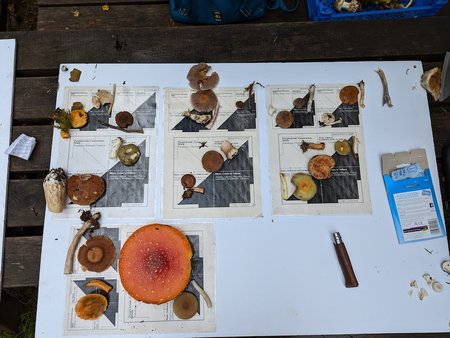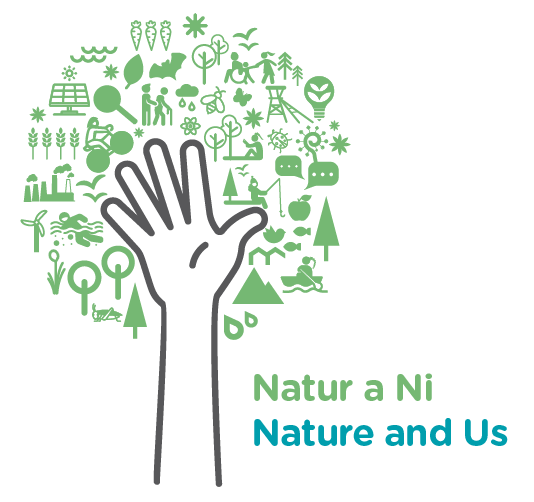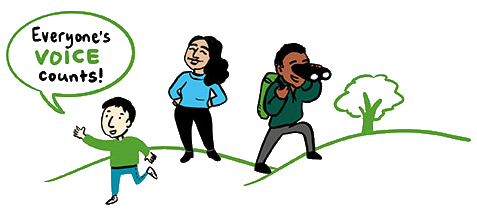Lisa Heledd Jones

Lisa Heledd Jones works with sound, story and landscape, often producing audio, film and performance work. For this residency Lisa will focus on the small village where she was born and lives – Glyndyfrdwy. Like many small rural villages, shared spaces are disappearing – the shops, school and chapels are all closed.
Lisa carried out a series individual and of group activities, litter picking, walking and talking people on fungus hunts around the village. She did this to explore how the community around where grew up, and now lives, has evolved over the years. She takes a personal journey back through the various times she has lived there and the impressions it has made on her life. One catalyst for the project has been Lisa’s observation of the changes in the community. The primary school, shop and pub have all closed, a 6th of the houses in the village are now holiday accommodation and the primary language of the village has moved from Welsh to English.
What she learnt
She observes that the identity of the community is being lost as people prefer to associate themselves with the closest town, Llangollen. In her words: “the village is dead”.
Key points of reflection:
Her worry to action ratio has been way off: When she works elsewhere there is worry but it is manageable. But when working hyper-locally it causes her a lot of pain and anxiety. The pressure of trying to deliver creative projects with people she knows, here friends and family make the process so gruelling. Community engagement feels so different when the people you are recording are close to you and the trees that you are asking people to respect are part of your life. Fundamentally, she does not want to let anyone down. Therefore, the support that the residency offered through the training, mentors, peer group and time for introspection and reflection has helped her shift her practice from trying to capture and shape others’ views to exploring her own.
She is from a long linage of socially engaged artists in the village: She has uncovered members of the village through its history that put themselves forward to bring people together. The village baker who had a darkroom in the back of the bakery and started a sketch event in the village to make people laugh, the post mistress who restated the village carnival. She reflects that they did not call themselves artists, but creativity drove what they did and was the way the reached out into the community and help tie it together.
She can be herself: Her practice usually revolves around creating event that she thinks will be attractive to people. In this residency she experimented with inviting people from the village out one by one to walk with her and share stories about the village and the places they love. From this she created a space for sharing personal stories and refection on how we connect to landscape. She used this, and her knowledge of fungus, to develop a series of ‘fungus wellbeing walks’.
She is a mushroom: The mycelial networks have presented themselves as a strong metaphor in Lisa’s residency. The interconnected network of support that has existed in nature for 450 million years. This represents the structure of a resilient community in Lisa’s mind and the role of individuals in that community being as important as the buildings and spaces that they occupy.
In conclusion, she reflects: For this village to be healthy, more trees need protecting and planting, more mushrooms need to appear and spore, more artists need to get to work. This isn’t about nostalgia; this is about reframing what a community needs and what a community can look like now and in the future. This is about giving reason for, and strengthening connections between, the human and non-human. This about listening deeply to ourselves and others, and this deep listening is both art and activism and has been happening all around us for 450 million years.
What we can learn from this
When we talk about villages losing their heart or communities dying, we’re often talking about the loss of civic infrastructure, the local shop or the pub. We don’t often talk about the glue that keeps a community together, its people. If we want to see villages and towns in the future that are more resilient on each other, producing food and energy locally and traveling less, we need to invest in the people that make them thrive. This does not mean just expecting volunteers to pick up the cause and to try and create the social mycelium a community needs to survive, it means nurturing conveners and organisers, doers, and makers. Inversing in culture at a local level in a sustained way. This is important to a carbon neutral society as active travel route or food cooperatives.

